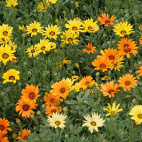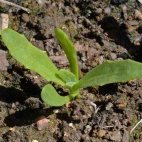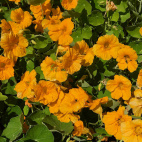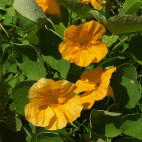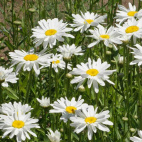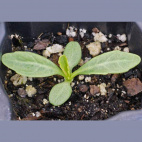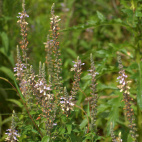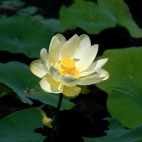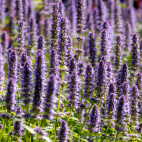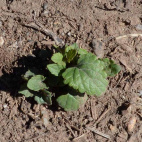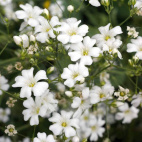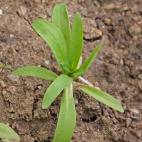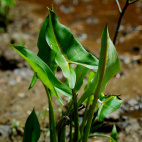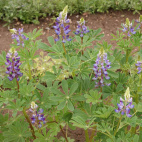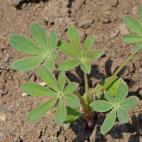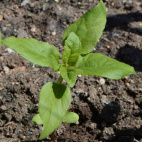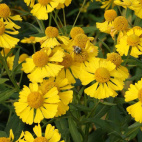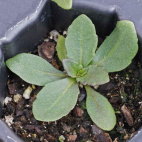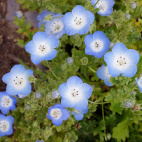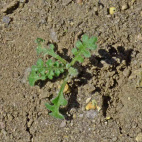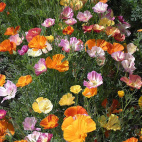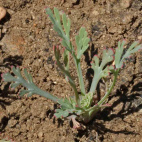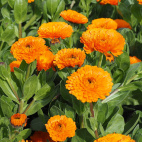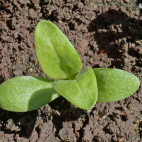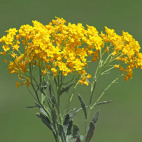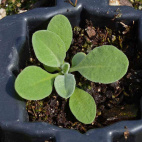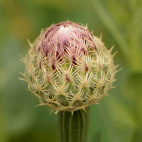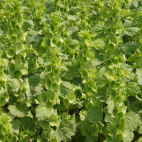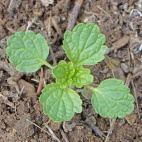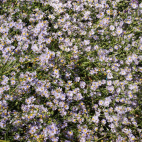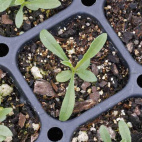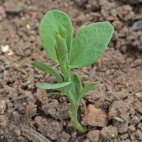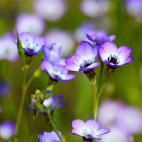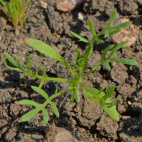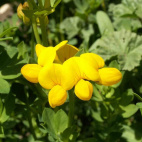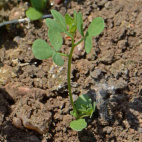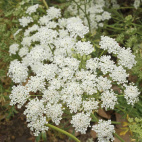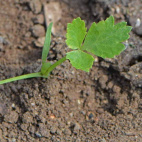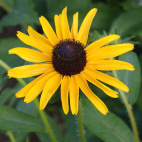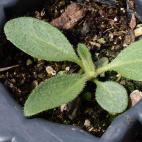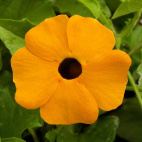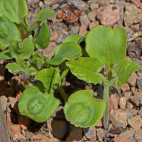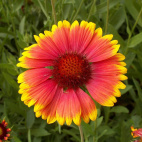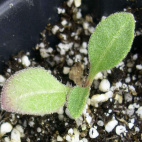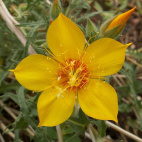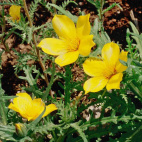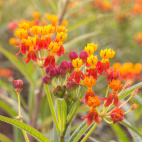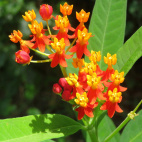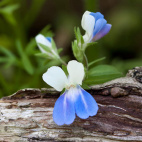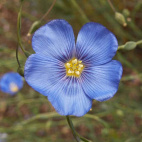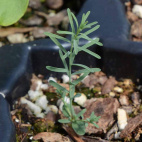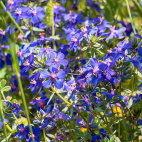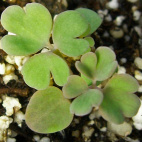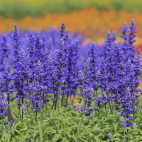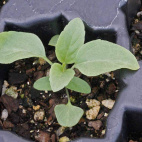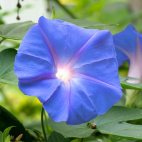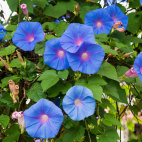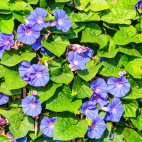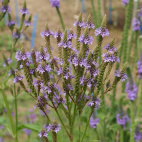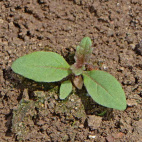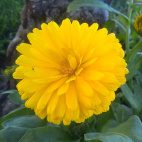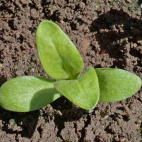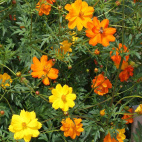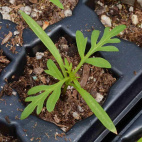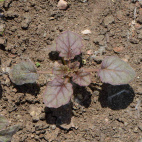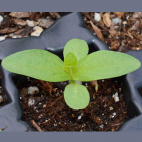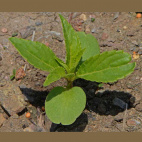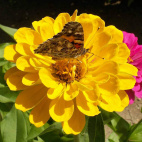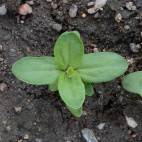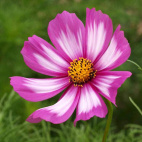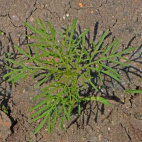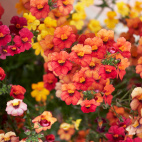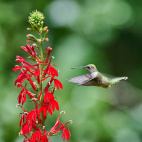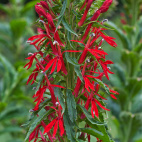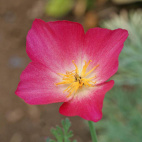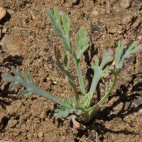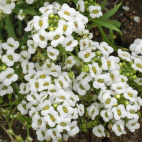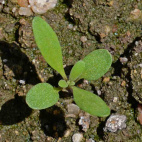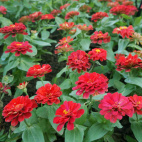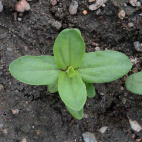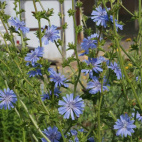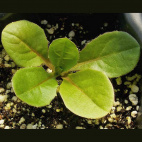Color
Availability
USDA Zone
Region
Type
Duration
Season
Germination
Soil
Sunlight
Height
Use
Narrow Your Search
Color
Availability
USDA Zone
Region
Type
Duration
Season
Germination
Soil
Sunlight
Height
Use
Wildflower Seeds - California Region
-
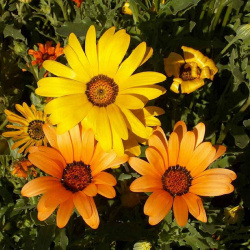 On Sale!
African Daisy Seeds
Dimorphotheca sinuata
These orange and yellow Daisies come from the wilds of Africa but will bring cheer and sunshine wherever they are planted. Always facing the sun, the bright blossoms close at sunset and in cloudy weather.Quick View$3.48 Pkt - $8.93 / Oz
On Sale!
African Daisy Seeds
Dimorphotheca sinuata
These orange and yellow Daisies come from the wilds of Africa but will bring cheer and sunshine wherever they are planted. Always facing the sun, the bright blossoms close at sunset and in cloudy weather.Quick View$3.48 Pkt - $8.93 / Oz -
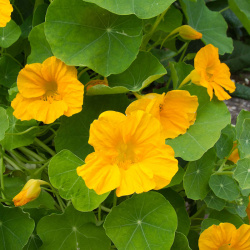 Out Of Stock
Alaska Gold Nasturtium Seeds
Tropaeolum nanum
Go for the gold with these rich yellow blooms, scattered among lovely variegated foliage. This easy-to-grow, compact annual also performs well as a container plant.Quick View$3.48 Pkt - $6.84 / Oz
Out Of Stock
Alaska Gold Nasturtium Seeds
Tropaeolum nanum
Go for the gold with these rich yellow blooms, scattered among lovely variegated foliage. This easy-to-grow, compact annual also performs well as a container plant.Quick View$3.48 Pkt - $6.84 / Oz -
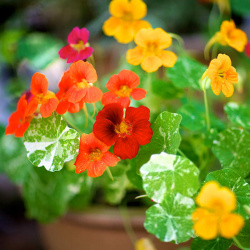 Alaska Nasturtium Seed Mix
Tropaeolum nanum
A dwarf variety, this mix comes in lovely shades of gold, orange, red, and yellow. This annual also has variegated leaves and is easy to grow, making it easy to have a beautiful flower bed with minimal effort.Quick View$3.48 Pkt - $6.84 / Oz
Alaska Nasturtium Seed Mix
Tropaeolum nanum
A dwarf variety, this mix comes in lovely shades of gold, orange, red, and yellow. This annual also has variegated leaves and is easy to grow, making it easy to have a beautiful flower bed with minimal effort.Quick View$3.48 Pkt - $6.84 / Oz -
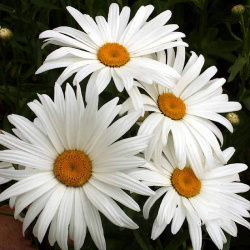 On Sale!
Alaska Shasta Daisy Seeds
Chrysanthemum maximum
Once established, this hardy perennial forms dense colonies of beautiful, white-petaled blooms. This easy-to-grow daisy looks a lot like the Ox Eye Daisy, but it is not as invasive.Quick View$2.98 Pkt - $7.92 / Oz
On Sale!
Alaska Shasta Daisy Seeds
Chrysanthemum maximum
Once established, this hardy perennial forms dense colonies of beautiful, white-petaled blooms. This easy-to-grow daisy looks a lot like the Ox Eye Daisy, but it is not as invasive.Quick View$2.98 Pkt - $7.92 / Oz -
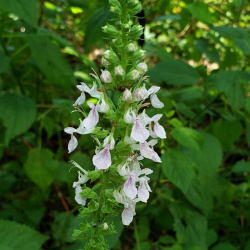 American Germander Seeds
Teucrium canadense
Clustered on velvety spikes, these pink to lavender flowers attract butterflies and hummingbirds. This native perennial is also known as Wild Basil, but we don't recommend consuming it.Quick View$3.48 Pkt - $30.00 / Oz
American Germander Seeds
Teucrium canadense
Clustered on velvety spikes, these pink to lavender flowers attract butterflies and hummingbirds. This native perennial is also known as Wild Basil, but we don't recommend consuming it.Quick View$3.48 Pkt - $30.00 / Oz -
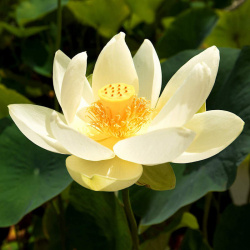 American Lotus Seeds
Nelumbo lutea
Add a bit of exotic flair to the garden pond with these aquatic perennial lotus flower seeds. The large yellowish blooms and round leaves float on the surface of the water. It looks like a flower from the tropics, but it is hardy and native to states as far north as Wisconsin!Quick Viewx
American Lotus Seeds
Nelumbo lutea
Add a bit of exotic flair to the garden pond with these aquatic perennial lotus flower seeds. The large yellowish blooms and round leaves float on the surface of the water. It looks like a flower from the tropics, but it is hardy and native to states as far north as Wisconsin!Quick ViewxAmerican Lotus Seeds
Nelumbo lutea
Add a bit of exotic flair to the garden pond with these aquatic perennial lotus flower seeds. The large yellowish blooms and round leaves float on the surface of the water. It looks like a flower from the tropics, but it is hardy and native to states as far north as Wisconsin!
$3.48 Pkt - $14.07 / Oz -
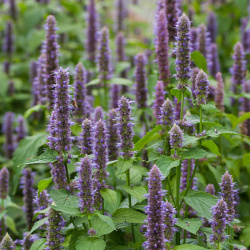 Anise Hyssop Seeds
Agastache foeniculum
A member of the mint family, this wildflower brings a delightfully rich scent to any herb garden. The tall, lavender flower spikes attract multitudes of hummingbirds, bees, and butterflies. It is a favorite with beekeepers, and we have found that the anise honey from this plant is excellent!Quick Viewx
Anise Hyssop Seeds
Agastache foeniculum
A member of the mint family, this wildflower brings a delightfully rich scent to any herb garden. The tall, lavender flower spikes attract multitudes of hummingbirds, bees, and butterflies. It is a favorite with beekeepers, and we have found that the anise honey from this plant is excellent!Quick ViewxAnise Hyssop Seeds
Agastache foeniculum
A member of the mint family, this wildflower brings a delightfully rich scent to any herb garden. The tall, lavender flower spikes attract multitudes of hummingbirds, bees, and butterflies. It is a favorite with beekeepers, and we have found that the anise honey from this plant is excellent!
$3.48 Pkt - $16.57 / Oz -
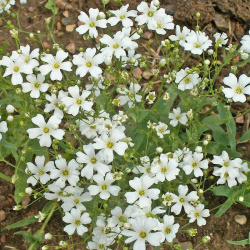 On Sale!
Annual Baby's Breath Seeds
Gypsophila elegans
Delicate, white sprays create a vision of loveliness for any occasion. This easy-to-grow annual grows quickly, and is popular for floral bouquets, but looks great in the garden too.Quick View$2.98 Pkt - $5.96 / Oz
On Sale!
Annual Baby's Breath Seeds
Gypsophila elegans
Delicate, white sprays create a vision of loveliness for any occasion. This easy-to-grow annual grows quickly, and is popular for floral bouquets, but looks great in the garden too.Quick View$2.98 Pkt - $5.96 / Oz -
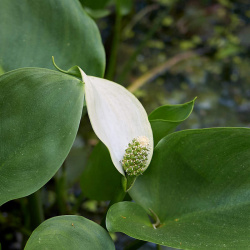 Store in the FridgeOn Sale!
Arrow Arum Seeds
Peltandra virginica
Named for its distinctive arrow-shaped leaves, this native plant grows in marshes, bogs, and on riverbanks. The greenish-white flowers develop sizeable green seed pods, which are best planted when still wet. Therefore, this arrow arum seed is stored wet and cold until we ship it to you.Quick Viewx
Store in the FridgeOn Sale!
Arrow Arum Seeds
Peltandra virginica
Named for its distinctive arrow-shaped leaves, this native plant grows in marshes, bogs, and on riverbanks. The greenish-white flowers develop sizeable green seed pods, which are best planted when still wet. Therefore, this arrow arum seed is stored wet and cold until we ship it to you.Quick ViewxArrow Arum Seeds
Peltandra virginica
Named for its distinctive arrow-shaped leaves, this native plant grows in marshes, bogs, and on riverbanks. The greenish-white flowers develop sizeable green seed pods, which are best planted when still wet. Therefore, this arrow arum seed is stored wet and cold until we ship it to you.
$3.48 Pkt - $7.92 / Oz -
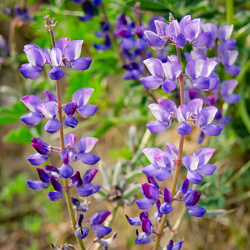 Arroyo Lupine Seeds
Lupinus succulentus
Though native to California, this lovely wildflower can be found throughout the American southwest. This annual grows quickly and is very easy to grow in the garden, no matter where you live.Quick Viewx
Arroyo Lupine Seeds
Lupinus succulentus
Though native to California, this lovely wildflower can be found throughout the American southwest. This annual grows quickly and is very easy to grow in the garden, no matter where you live.Quick ViewxArroyo Lupine Seeds
Lupinus succulentus
Though native to California, this lovely wildflower can be found throughout the American southwest. This annual grows quickly and is very easy to grow in the garden, no matter where you live.
$3.48 Pkt - $9.15 / Oz -
 Autumn Beauty Sunflower Seeds
Helianthus annuus
The warm autumn tones of this sunflower mix are very popular and will add rustic beauty to your fall decor. This annual is relatively tall and will produce many different stripes and colors of sunflowers. The really neat thing about sunflowers is that their flower heads follow the movement of the sun throughout the day!Quick Viewx
Autumn Beauty Sunflower Seeds
Helianthus annuus
The warm autumn tones of this sunflower mix are very popular and will add rustic beauty to your fall decor. This annual is relatively tall and will produce many different stripes and colors of sunflowers. The really neat thing about sunflowers is that their flower heads follow the movement of the sun throughout the day!Quick ViewxAutumn Beauty Sunflower Seeds
Helianthus annuus
The warm autumn tones of this sunflower mix are very popular and will add rustic beauty to your fall decor. This annual is relatively tall and will produce many different stripes and colors of sunflowers. The really neat thing about sunflowers is that their flower heads follow the movement of the sun throughout the day!
$3.48 Pkt - $6.84 / Oz -
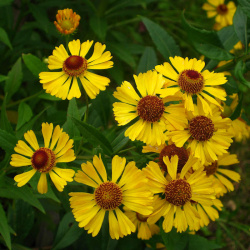 Autumn Sneezeweed Seeds
Helenium autumnale
If you tend to have heavy or wet soil in your garden spot, then these may be just the wildflower that you need! The daisy-like perennial can also be grown in a medium soil but needs to be well-watered, as they do not tolerate drought.Quick View$2.98 Pkt - $10.57 / Oz
Autumn Sneezeweed Seeds
Helenium autumnale
If you tend to have heavy or wet soil in your garden spot, then these may be just the wildflower that you need! The daisy-like perennial can also be grown in a medium soil but needs to be well-watered, as they do not tolerate drought.Quick View$2.98 Pkt - $10.57 / Oz -
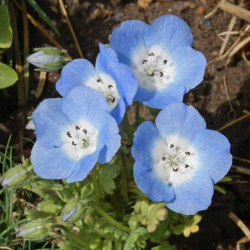 Baby Blue Eyes Seeds
Nemophila menziesii
Early spring brings this baby-blue annual to the foothills and grasslands of the western United States. Its petite habit makes it an excellent choice for massed plantings, containers, and borders.Quick View$2.98 Pkt - $9.35 / Oz
Baby Blue Eyes Seeds
Nemophila menziesii
Early spring brings this baby-blue annual to the foothills and grasslands of the western United States. Its petite habit makes it an excellent choice for massed plantings, containers, and borders.Quick View$2.98 Pkt - $9.35 / Oz -
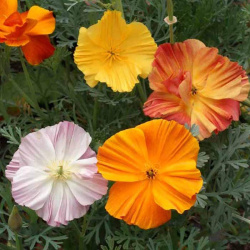 On Sale!
Ballerina California Poppy Seed Mix
Eschscholzia californica
Beautiful shades of red, pink, and gold will dazzle the eye with this popular California Poppy mix. The silky, cup-shaped flowers form on slender stems just like the common Orange California Poppy, but this shows off with many more colors.Quick Viewx
On Sale!
Ballerina California Poppy Seed Mix
Eschscholzia californica
Beautiful shades of red, pink, and gold will dazzle the eye with this popular California Poppy mix. The silky, cup-shaped flowers form on slender stems just like the common Orange California Poppy, but this shows off with many more colors.Quick ViewxBallerina California Poppy Seed Mix
Eschscholzia californica
Beautiful shades of red, pink, and gold will dazzle the eye with this popular California Poppy mix. The silky, cup-shaped flowers form on slender stems just like the common Orange California Poppy, but this shows off with many more colors.
$3.48 Pkt - $13.00 / Oz -
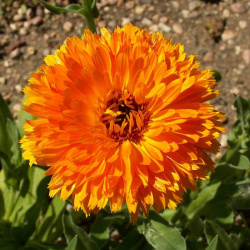 Ball's Orange Calendula Seeds
Calendula officinalis
These stunning 3" double blooms are a deep orange hue with the classic Calendula aroma, which acts as a natural mosquito repellant. This easy-to-grow annual is lovely as a cut flower or as a garnish.Quick View$3.48 Pkt - $7.09 / Oz
Ball's Orange Calendula Seeds
Calendula officinalis
These stunning 3" double blooms are a deep orange hue with the classic Calendula aroma, which acts as a natural mosquito repellant. This easy-to-grow annual is lovely as a cut flower or as a garnish.Quick View$3.48 Pkt - $7.09 / Oz -
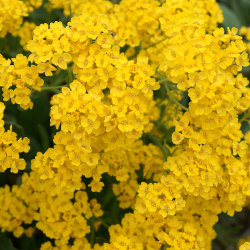 On Sale!
Basket of Gold Seeds
Alyssum saxatile
These sunny flowers will brighten any corner. Low, cascading growth and preference for dry, rocky ground makes Basket of Gold a popular choice for rock gardens.Quick View$3.48 Pkt - $15.95 / Oz
On Sale!
Basket of Gold Seeds
Alyssum saxatile
These sunny flowers will brighten any corner. Low, cascading growth and preference for dry, rocky ground makes Basket of Gold a popular choice for rock gardens.Quick View$3.48 Pkt - $15.95 / Oz -
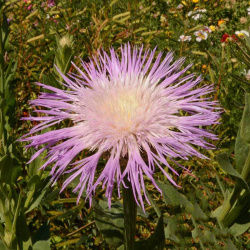 On Sale!
Basketflower Seeds
Centaurea americana
The basket-like base of these blossoms holds delicate petals, hence its name. Although it is a distant relative of the thistle, the colorful flowers give off a sweet honey-like scent.Quick View$3.48 Pkt - $16.57 / Oz
On Sale!
Basketflower Seeds
Centaurea americana
The basket-like base of these blossoms holds delicate petals, hence its name. Although it is a distant relative of the thistle, the colorful flowers give off a sweet honey-like scent.Quick View$3.48 Pkt - $16.57 / Oz -
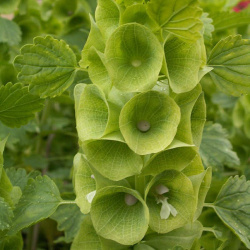 Bells of Ireland Seeds
Moluccella laevis
Add a bit o' Irish green to your garden with these extraordinary plants. The green bell-shaped calyxes can be enjoyed in the garden, or they can give beautiful contrast in fresh or dried flower arrangements.Quick View$3.48 Pkt - $12.65 / Oz
Bells of Ireland Seeds
Moluccella laevis
Add a bit o' Irish green to your garden with these extraordinary plants. The green bell-shaped calyxes can be enjoyed in the garden, or they can give beautiful contrast in fresh or dried flower arrangements.Quick View$3.48 Pkt - $12.65 / Oz -
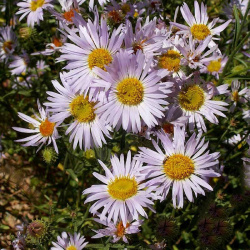 Bigelow's Aster Seeds
Machaeranthera biglovii
Native to the Southwestern United States, this bushy biennial is relatively resistant to heat and drought, making it a candidate for xeriscaping. The plant attracts butterflies and provides erosion control, making it an ideal pick for a wildflower planting.Quick Viewx
Bigelow's Aster Seeds
Machaeranthera biglovii
Native to the Southwestern United States, this bushy biennial is relatively resistant to heat and drought, making it a candidate for xeriscaping. The plant attracts butterflies and provides erosion control, making it an ideal pick for a wildflower planting.Quick ViewxBigelow's Aster Seeds
Machaeranthera biglovii
Native to the Southwestern United States, this bushy biennial is relatively resistant to heat and drought, making it a candidate for xeriscaping. The plant attracts butterflies and provides erosion control, making it an ideal pick for a wildflower planting.
$3.48 Pkt - $32.00 / Oz -
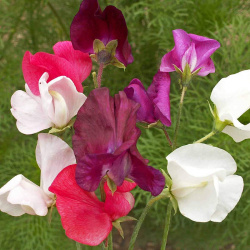 Bijou Sweet Pea Seed Mix
Lathyrus odoratus
This dwarf Sweet Pea variety produces masses of fragrant flowers on sturdy, bushy plants. Perfect for bouquets, this mix includes red, pink, purple, blue, and white. This annual is very easy to grow and is a must for those who love various aromas in their garden.Quick Viewx
Bijou Sweet Pea Seed Mix
Lathyrus odoratus
This dwarf Sweet Pea variety produces masses of fragrant flowers on sturdy, bushy plants. Perfect for bouquets, this mix includes red, pink, purple, blue, and white. This annual is very easy to grow and is a must for those who love various aromas in their garden.Quick ViewxBijou Sweet Pea Seed Mix
Lathyrus odoratus
This dwarf Sweet Pea variety produces masses of fragrant flowers on sturdy, bushy plants. Perfect for bouquets, this mix includes red, pink, purple, blue, and white. This annual is very easy to grow and is a must for those who love various aromas in their garden.
$3.75 Pkt - $9.35 / Oz -
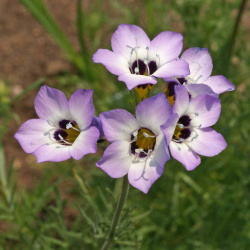 Bird's Eyes Seeds
Gilia tricolor
Lavender and white with golden throats, these delightful little flowers are sure to please. Bird's Eyes are native to California but can be grown as an annual in harsher climates as well. Their sweet chocolate-like scent is also a magnet for hummingbirds.Quick View$2.98 Pkt - $9.54 / Oz
Bird's Eyes Seeds
Gilia tricolor
Lavender and white with golden throats, these delightful little flowers are sure to please. Bird's Eyes are native to California but can be grown as an annual in harsher climates as well. Their sweet chocolate-like scent is also a magnet for hummingbirds.Quick View$2.98 Pkt - $9.54 / Oz -
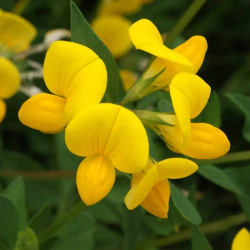 On Sale!
Bird's Foot Trefoil Seeds
Lotus corniculatus
This nitrogen-fixing legume is best known for its incredible adaptability to almost any soil type, which explains why it has naturalized across much of the US. This cheery yellow flower makes excellent forage for livestock and can be grown and harvested for hay. Care should be taken in where it is planted as it can become aggressive in ideal conditions.Quick Viewx
On Sale!
Bird's Foot Trefoil Seeds
Lotus corniculatus
This nitrogen-fixing legume is best known for its incredible adaptability to almost any soil type, which explains why it has naturalized across much of the US. This cheery yellow flower makes excellent forage for livestock and can be grown and harvested for hay. Care should be taken in where it is planted as it can become aggressive in ideal conditions.Quick ViewxBird's Foot Trefoil Seeds
Lotus corniculatus
This nitrogen-fixing legume is best known for its incredible adaptability to almost any soil type, which explains why it has naturalized across much of the US. This cheery yellow flower makes excellent forage for livestock and can be grown and harvested for hay. Care should be taken in where it is planted as it can become aggressive in ideal conditions.
$3.75 Pkt - $7.01 / Oz -
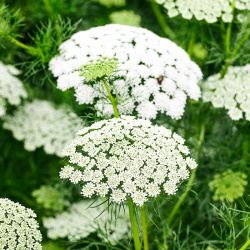 Bishop's Flower Seeds
Ammi majus
Sometimes mistaken for Queen Anne's Lace, this lovely annual grows neat, delicate clusters. The blooms are famous for their long-lasting beauty both in fresh and dried floral arrangements.Quick View$2.98 Pkt - $7.41 / Oz
Bishop's Flower Seeds
Ammi majus
Sometimes mistaken for Queen Anne's Lace, this lovely annual grows neat, delicate clusters. The blooms are famous for their long-lasting beauty both in fresh and dried floral arrangements.Quick View$2.98 Pkt - $7.41 / Oz -
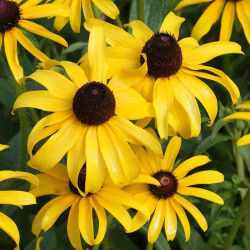 Black Eyed Susan Seeds
Rudbeckia hirta
Black-eyed Susan is probably the most popular wildflower for summer gardens. This biennial is so easy to grow, and produces a lot of showy yellow blooms that are liked by butterflies - so why not have it in the garden?Quick View$2.98 Pkt - $7.09 / Oz
Black Eyed Susan Seeds
Rudbeckia hirta
Black-eyed Susan is probably the most popular wildflower for summer gardens. This biennial is so easy to grow, and produces a lot of showy yellow blooms that are liked by butterflies - so why not have it in the garden?Quick View$2.98 Pkt - $7.09 / Oz -
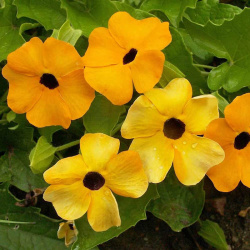 Black Eyed Susan Vine Seeds
Thunbergia alata
Originally native to areas of southern and eastern Africa, this stunning annual vine has since naturalized to many other areas of the world. The orange and yellow blossoms are perfect for covering fences, trellises, and arbors.Quick View$3.48 Pkt - $9.88 / Oz
Black Eyed Susan Vine Seeds
Thunbergia alata
Originally native to areas of southern and eastern Africa, this stunning annual vine has since naturalized to many other areas of the world. The orange and yellow blossoms are perfect for covering fences, trellises, and arbors.Quick View$3.48 Pkt - $9.88 / Oz -
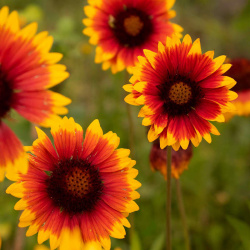 On Sale!
Blanket Flower Seeds
Gaillardia aristata
Reminiscent of an Indian blanket, this bi-colored variety comes in yellow, red, burgundy, and brown. Gaillardia Aristata is a native wildflower of the Northern Rockies, so it is better equipped to handle cold than its cousin, Indian Blanket. Buy these easy-to-grow Gaillardia Aristata seeds for color all season long.Quick Viewx
On Sale!
Blanket Flower Seeds
Gaillardia aristata
Reminiscent of an Indian blanket, this bi-colored variety comes in yellow, red, burgundy, and brown. Gaillardia Aristata is a native wildflower of the Northern Rockies, so it is better equipped to handle cold than its cousin, Indian Blanket. Buy these easy-to-grow Gaillardia Aristata seeds for color all season long.Quick ViewxBlanket Flower Seeds
Gaillardia aristata
Reminiscent of an Indian blanket, this bi-colored variety comes in yellow, red, burgundy, and brown. Gaillardia Aristata is a native wildflower of the Northern Rockies, so it is better equipped to handle cold than its cousin, Indian Blanket. Buy these easy-to-grow Gaillardia Aristata seeds for color all season long.
$3.48 Pkt - $7.59 / Oz -
 Out Of Stock
Blazing Star Seeds
Mentzelia lindleyi
This desert native is sometimes called Evening Star since it blooms through the night and closes with the morning sun. This annual plant has shiny petals and is very attractive in large plantings, rock gardens, or on dry and gravelly slopes.Quick Viewx
Out Of Stock
Blazing Star Seeds
Mentzelia lindleyi
This desert native is sometimes called Evening Star since it blooms through the night and closes with the morning sun. This annual plant has shiny petals and is very attractive in large plantings, rock gardens, or on dry and gravelly slopes.Quick ViewxBlazing Star Seeds
Mentzelia lindleyi
This desert native is sometimes called Evening Star since it blooms through the night and closes with the morning sun. This annual plant has shiny petals and is very attractive in large plantings, rock gardens, or on dry and gravelly slopes.
$3.48 Pkt - $15.72 / Oz -
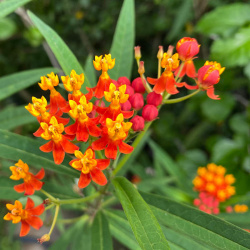 On Sale!
Blood Flower Seeds
Asclepias curassavica
Also known as tropical milkweed, these brilliant red and yellow blossoms explode with color in their first growing season. Although this species is a member of the Milkweed family, recent studies have shown that it actually may be detrimental to the Monarch Butterfly, especially in southern climates where the plants can survive year-round. The plants can harbor diseases that harm the Monarch, and disrupt their normal migratory patterns. Please only use this plant as an annual, and do not let it winter over!Quick Viewx
On Sale!
Blood Flower Seeds
Asclepias curassavica
Also known as tropical milkweed, these brilliant red and yellow blossoms explode with color in their first growing season. Although this species is a member of the Milkweed family, recent studies have shown that it actually may be detrimental to the Monarch Butterfly, especially in southern climates where the plants can survive year-round. The plants can harbor diseases that harm the Monarch, and disrupt their normal migratory patterns. Please only use this plant as an annual, and do not let it winter over!Quick ViewxBlood Flower Seeds
Asclepias curassavica
Also known as tropical milkweed, these brilliant red and yellow blossoms explode with color in their first growing season. Although this species is a member of the Milkweed family, recent studies have shown that it actually may be detrimental to the Monarch Butterfly, especially in southern climates where the plants can survive year-round. The plants can harbor diseases that harm the Monarch, and disrupt their normal migratory patterns. Please only use this plant as an annual, and do not let it winter over!
$3.48 Pkt - $14.49 / Oz -
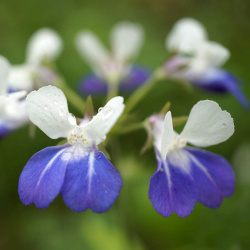 Out Of Stock
Blue Eyed Mary Seeds
Collinsia grandiflora
Expect compliments on this blue-eyed little beauty. The bright flower naturally grows in dry prairies, rocky areas, or at the border of woodlands, but seems quite at home in most average garden conditions as well.Quick Viewx
Out Of Stock
Blue Eyed Mary Seeds
Collinsia grandiflora
Expect compliments on this blue-eyed little beauty. The bright flower naturally grows in dry prairies, rocky areas, or at the border of woodlands, but seems quite at home in most average garden conditions as well.Quick ViewxBlue Eyed Mary Seeds
Collinsia grandiflora
Expect compliments on this blue-eyed little beauty. The bright flower naturally grows in dry prairies, rocky areas, or at the border of woodlands, but seems quite at home in most average garden conditions as well.
$3.48 Pkt - $10.19 / Oz -
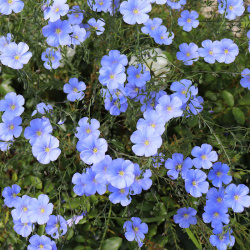 On Sale!
Blue Flax Seeds
Linum perrene
See the sky reflected in a sea of these heavenly blue blooms. This perennial is fast-growing and looks best as a mass planting. It is hard to imagine how this Linum Perrene plant produces such a vibrant color from just water and dirt.Quick View$3.48 Pkt - $7.65 / Oz
On Sale!
Blue Flax Seeds
Linum perrene
See the sky reflected in a sea of these heavenly blue blooms. This perennial is fast-growing and looks best as a mass planting. It is hard to imagine how this Linum Perrene plant produces such a vibrant color from just water and dirt.Quick View$3.48 Pkt - $7.65 / Oz -
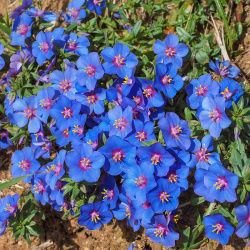 Out Of Stock
Blue Pimpernel Seeds
Anagallis monelli
One of the brightest, truest blues in nature, these eye-catching flowers originally grew wild along the rocky slopes and sand dunes of the Mediterranean coast. This annual is a lovely choice for hanging baskets or an annual wildflower planting.Quick Viewx
Out Of Stock
Blue Pimpernel Seeds
Anagallis monelli
One of the brightest, truest blues in nature, these eye-catching flowers originally grew wild along the rocky slopes and sand dunes of the Mediterranean coast. This annual is a lovely choice for hanging baskets or an annual wildflower planting.Quick ViewxBlue Pimpernel Seeds
Anagallis monelli
One of the brightest, truest blues in nature, these eye-catching flowers originally grew wild along the rocky slopes and sand dunes of the Mediterranean coast. This annual is a lovely choice for hanging baskets or an annual wildflower planting.
$2.98 Pkt - $10.57 / Oz -
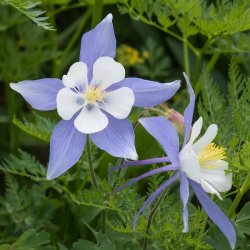 Blue Rocky Mountain Columbine Seeds
Aquilegia caerulea
This blue beauty grows in the meadows and cliffs of the Rocky Mountains. Many gardeners prize this clump-forming perennial with its large upward-facing blue and white flowers - it is so unique! Fill your home garden with a variety of our Midwest wildflower seed mixes.Quick Viewx
Blue Rocky Mountain Columbine Seeds
Aquilegia caerulea
This blue beauty grows in the meadows and cliffs of the Rocky Mountains. Many gardeners prize this clump-forming perennial with its large upward-facing blue and white flowers - it is so unique! Fill your home garden with a variety of our Midwest wildflower seed mixes.Quick ViewxBlue Rocky Mountain Columbine Seeds
Aquilegia caerulea
This blue beauty grows in the meadows and cliffs of the Rocky Mountains. Many gardeners prize this clump-forming perennial with its large upward-facing blue and white flowers - it is so unique! Fill your home garden with a variety of our Midwest wildflower seed mixes.
$3.48 Pkt - $20.16 / Oz -
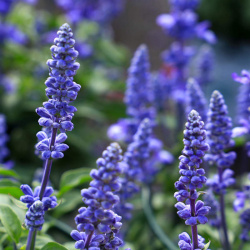 On Sale!
Blue Sage Seeds
Salvia farinacea
Dressed in vivid blue, these wildflower spikes are easy to grow. This perennial comes from Texas, so it can tolerate a lot of heat and drought. This plant has a wild habit and may look a little unruly in a refined garden.Quick View$3.48 Pkt - $15.72 / Oz
On Sale!
Blue Sage Seeds
Salvia farinacea
Dressed in vivid blue, these wildflower spikes are easy to grow. This perennial comes from Texas, so it can tolerate a lot of heat and drought. This plant has a wild habit and may look a little unruly in a refined garden.Quick View$3.48 Pkt - $15.72 / Oz -
 On Sale!
Blue Star Morning Glory Seeds
Ipomea tricolor
This rare variety features large, pale blue flowers with dark blue markings. This annual climbing vine is perfect for a tall fence or trellis, and by the end of the growing season will have enveloped it with its vining flowers and leaves.Quick View$3.25 Pkt - $5.96 / Oz
On Sale!
Blue Star Morning Glory Seeds
Ipomea tricolor
This rare variety features large, pale blue flowers with dark blue markings. This annual climbing vine is perfect for a tall fence or trellis, and by the end of the growing season will have enveloped it with its vining flowers and leaves.Quick View$3.25 Pkt - $5.96 / Oz -
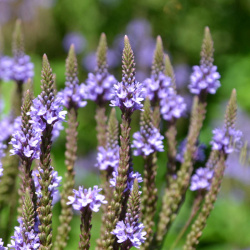 On Sale!
Blue Vervain Seeds
Verbena hastata
These small blue blooms grow on tall stems and are frequently found growing in moist areas. This native attracts a variety of butterflies and is often used in wildflower seed mixes.Quick View$3.48 Pkt - $12.65 / Oz
On Sale!
Blue Vervain Seeds
Verbena hastata
These small blue blooms grow on tall stems and are frequently found growing in moist areas. This native attracts a variety of butterflies and is often used in wildflower seed mixes.Quick View$3.48 Pkt - $12.65 / Oz -
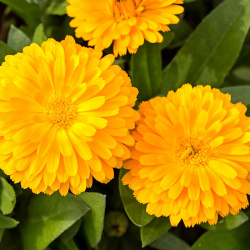 Out Of Stock
Bon Bon Yellow Calendula Seeds
Calendula officinalis
Varying from cream to bright yellow, these compact blooms provide color all season. The lovely Calendula aroma is also a natural mosquito repellant. The easy-to-grow annual is attractive as a cut flower or a garnish.Quick View$3.48 Pkt - $7.65 / Oz
Out Of Stock
Bon Bon Yellow Calendula Seeds
Calendula officinalis
Varying from cream to bright yellow, these compact blooms provide color all season. The lovely Calendula aroma is also a natural mosquito repellant. The easy-to-grow annual is attractive as a cut flower or a garnish.Quick View$3.48 Pkt - $7.65 / Oz -
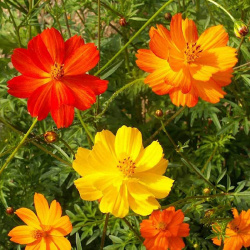 Bright Lights Sulphur Cosmos Seed Mix
Cosmos sulphureus
Light up the landscape with these cheerful red, orange, and yellow blossoms that are shorter than most Cosmos varieties. This easy-to-grow annual will reward the gardener who does not have much time to fuss with plants.Quick View$3.48 Pkt - $7.01 / Oz
Bright Lights Sulphur Cosmos Seed Mix
Cosmos sulphureus
Light up the landscape with these cheerful red, orange, and yellow blossoms that are shorter than most Cosmos varieties. This easy-to-grow annual will reward the gardener who does not have much time to fuss with plants.Quick View$3.48 Pkt - $7.01 / Oz -
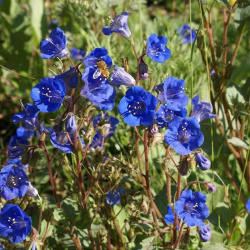 On Sale!
California Bluebell Seeds
Phacelia campanularia
This wildflower grows its intense blue bells in the wild deserts of California and Arizona. This tough little annual native now also colors gardens across the country, planted en masse, in rock gardens, or in even in containers. Bees are drawn to the wildflower as a source of nectar early in the growing season.Quick Viewx
On Sale!
California Bluebell Seeds
Phacelia campanularia
This wildflower grows its intense blue bells in the wild deserts of California and Arizona. This tough little annual native now also colors gardens across the country, planted en masse, in rock gardens, or in even in containers. Bees are drawn to the wildflower as a source of nectar early in the growing season.Quick ViewxCalifornia Bluebell Seeds
Phacelia campanularia
This wildflower grows its intense blue bells in the wild deserts of California and Arizona. This tough little annual native now also colors gardens across the country, planted en masse, in rock gardens, or in even in containers. Bees are drawn to the wildflower as a source of nectar early in the growing season.
$2.98 Pkt - $9.71 / Oz -
 California Giants Zinnia Seed Mix
Zinnia elegans
These enormous zinnias come in a stunning mix of pink, purple, red, orange, white, and yellow. This easy-to-grow annual blooms all summer long, and will attract butterflies to your yard and garden.Quick View$3.48 Pkt - $7.59 / Oz
California Giants Zinnia Seed Mix
Zinnia elegans
These enormous zinnias come in a stunning mix of pink, purple, red, orange, white, and yellow. This easy-to-grow annual blooms all summer long, and will attract butterflies to your yard and garden.Quick View$3.48 Pkt - $7.59 / Oz -
 Camilia Flowered Balsam Seed Mix
Impatiens balsamina
A Victorian favorite, this beautiful heirloom annual is an excellent choice for containers or as a border plant. The large, double blossoms come in a mix of rose, white, scarlet, and violet.Quick View$3.48 Pkt - $7.65 / Oz
Camilia Flowered Balsam Seed Mix
Impatiens balsamina
A Victorian favorite, this beautiful heirloom annual is an excellent choice for containers or as a border plant. The large, double blossoms come in a mix of rose, white, scarlet, and violet.Quick View$3.48 Pkt - $7.65 / Oz -
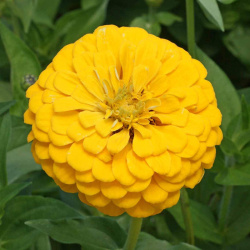 On Sale!
Canary Bird Zinnia Seeds
Zinnia elegans
Aglow with color, these luminous yellow blossoms will light up your garden with impressive blossoms. They can even be brought inside as cut flowers. Butterflies also appreciate the bright blooms of this easy annual.Quick View$3.48 Pkt - $7.92 / Oz
On Sale!
Canary Bird Zinnia Seeds
Zinnia elegans
Aglow with color, these luminous yellow blossoms will light up your garden with impressive blossoms. They can even be brought inside as cut flowers. Butterflies also appreciate the bright blooms of this easy annual.Quick View$3.48 Pkt - $7.92 / Oz -
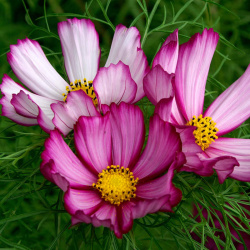 Candystripe Cosmos Seeds
Cosmos bipinnatus
These delightful white blossoms are etched with rosy pink stripes, making them a specialty Cosmos. This easy-to-grow annual will dress up any flower garden with little effort and attract many kinds of butterflies. Beautiful as a cut flower too.Quick View$3.48 Pkt - $7.59 / Oz
Candystripe Cosmos Seeds
Cosmos bipinnatus
These delightful white blossoms are etched with rosy pink stripes, making them a specialty Cosmos. This easy-to-grow annual will dress up any flower garden with little effort and attract many kinds of butterflies. Beautiful as a cut flower too.Quick View$3.48 Pkt - $7.59 / Oz -
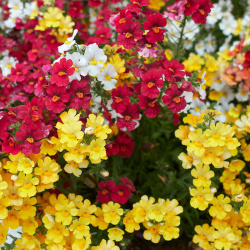 Out Of Stock
Cape Jewels Seeds
Nemesia strumosa
Plant a treasure trove in the backyard with these bright, pretty flowers. These pansy-like annuals originally grew around the Cape of South Africa, and are an excellent choice for massed plantings, hanging baskets, and borders.Quick Viewx
Out Of Stock
Cape Jewels Seeds
Nemesia strumosa
Plant a treasure trove in the backyard with these bright, pretty flowers. These pansy-like annuals originally grew around the Cape of South Africa, and are an excellent choice for massed plantings, hanging baskets, and borders.Quick ViewxCape Jewels Seeds
Nemesia strumosa
Plant a treasure trove in the backyard with these bright, pretty flowers. These pansy-like annuals originally grew around the Cape of South Africa, and are an excellent choice for massed plantings, hanging baskets, and borders.
$3.48 Pkt - $14.91 / Oz -
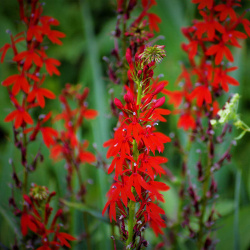 Cardinal Flower Seeds
Lobelia cardinalis
True to its name, this brilliant wildflower sports the scarlet hue of the cardinal. It has been called the reddest red in nature and flourishes in wet areas near ponds or streams. This flower is a native perennial wildflower that attracts hummingbirds and butterflies.Quick Viewx
Cardinal Flower Seeds
Lobelia cardinalis
True to its name, this brilliant wildflower sports the scarlet hue of the cardinal. It has been called the reddest red in nature and flourishes in wet areas near ponds or streams. This flower is a native perennial wildflower that attracts hummingbirds and butterflies.Quick ViewxCardinal Flower Seeds
Lobelia cardinalis
True to its name, this brilliant wildflower sports the scarlet hue of the cardinal. It has been called the reddest red in nature and flourishes in wet areas near ponds or streams. This flower is a native perennial wildflower that attracts hummingbirds and butterflies.
$3.75 Pkt - $80.00 / Oz -
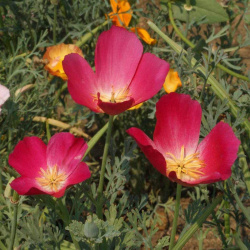 Carmine King California Poppy Seeds
Eschscholzia californica
A delicate rose pink with white centers, these blossoms are fit for royalty. This variety possesses the form and beauty of the Orange California Poppy, but just blooms in a different color.Quick View$2.98 Pkt - $9.54 / Oz
Carmine King California Poppy Seeds
Eschscholzia californica
A delicate rose pink with white centers, these blossoms are fit for royalty. This variety possesses the form and beauty of the Orange California Poppy, but just blooms in a different color.Quick View$2.98 Pkt - $9.54 / Oz -
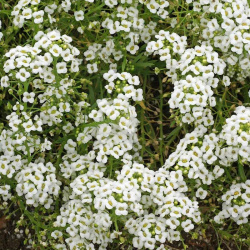 Carpet of Snow Sweet Alyssum Seeds
Lobularia maritima
Masses of tiny white flowers give the illusion of snow without the cold. This annual is perfect for hanging baskets, rock gardens, or a groundcover. As an added bonus, the flowers have a sweet scent that pollinators find attractive.Quick View$3.48 Pkt - $11.88 / Oz
Carpet of Snow Sweet Alyssum Seeds
Lobularia maritima
Masses of tiny white flowers give the illusion of snow without the cold. This annual is perfect for hanging baskets, rock gardens, or a groundcover. As an added bonus, the flowers have a sweet scent that pollinators find attractive.Quick View$3.48 Pkt - $11.88 / Oz -
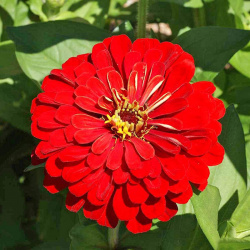 On Sale!
Cherry Queen Zinnia Seeds
Zinnia elegans
Robed in crimson, these stately beauties will not go unnoticed. Zinnias are easy to grow and will quickly reach blooming size, making them a fun project for children to grow.Quick View$3.48 Pkt - $7.92 / Oz
On Sale!
Cherry Queen Zinnia Seeds
Zinnia elegans
Robed in crimson, these stately beauties will not go unnoticed. Zinnias are easy to grow and will quickly reach blooming size, making them a fun project for children to grow.Quick View$3.48 Pkt - $7.92 / Oz -
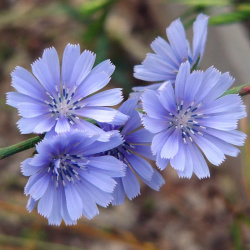 Chicory Seeds
Cichorium intybus
These stunning electric blue blooms are a feast for the eyes. This wildflower is so easy to grow that some gardeners consider it to be invasive. The leaves of the plant are edible and make nutritious salads.Quick View$2.98 Pkt - $6.67 / Oz
Chicory Seeds
Cichorium intybus
These stunning electric blue blooms are a feast for the eyes. This wildflower is so easy to grow that some gardeners consider it to be invasive. The leaves of the plant are edible and make nutritious salads.Quick View$2.98 Pkt - $6.67 / Oz












